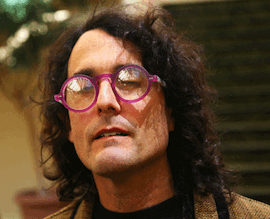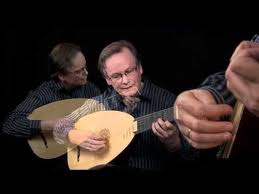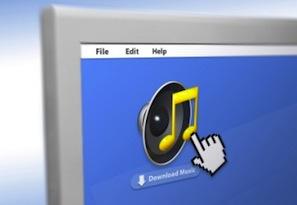Only a few decades after it was touted as “perfect sound forever,” the compact disc has lost its footing as top dog. Download sales, download piracy, and free and subscription streaming of both audio and video content are way up. Increasing numbers of soloists, ensembles, and composers are releasing their own music online, sometimes without a concomitant release on CD. And the vinyl platters many of us sold for a pittance when CD came along are making a comeback, especially among the young.
Ironically, the good old LP-nipper, who spun year after year on our old turntables, seems poised to pounce on those of us who gave him up for good. At his analog side, in an unlikely alliance, is the latest digital video medium, Blu-ray, whose improved, high-resolution sonics and surround-sound capabilities are making it the format of choice for physical (as opposed to online) releases of opera and even instrumental recordings.
For those for whom recorded sound is the chief means by which to hear performers and music, our ability to keep up with the times and choose wisely directly affects our happiness and well-being.
Why Sound Quality Matters
I was weaned on the opera recordings of Caruso, Galli-Curci, and Tetrazzini. When I was 11, my father brought home a Caruso reissue album and put on the sextet from Donizetti’s Lucia di Lammermoor.
“Daddy, I’ve heard that before!” I exclaimed.
“Yeah,” he replied. “You broke it when you were 2.”
Related Article
Examining Your Playback Options
May 15, 2012
iThink iCan: Is Apple in Tune With Classical Music?
April 30, 2012
At that moment, I discovered that recordings offered me a way home to the music and voices that spoke deep within me. As I began to whistle along with Caruso and his compatriots, I knew for certain that their music was already lodged in the center of my being, and would continue to provide me with sustenance and joy until my heart beat its last. As a teenager, vinyl records became the primary medium by which I connected with my deepest wants, desires, feelings, and passions, which I found myself unable to express verbally.

I developed a desire to own the best audio equipment available so that I could move closer to music and performances that made life worth living. I cared not for owning a house, a new car, or Imelda Marcos’ shoe collection. All that really mattered was food, shelter, and a stereo system. I wanted to be able to hear every in-breath that Lotte Lehmann took, every change of dynamics and vibrato in the Schubert recordings of Elisabeth Schumann. And, since I also grew up with Oistrakh’s recording of Mendelssohn’s Violin Concerto and the original cast recordings of Annie Get Your Gun, South Pacific, and Finian’s Rainbow, every single iota of belt and gelt that David, Ethel, Mary, and Ella had in them.
Others’ stories are different, but I’ve found the same holds true for many of the audio experts I consulted for this article. David Chesky, who cofounded the high-resolution download site HDTracks.com, is a composer and keyboard artist whose new ballet was recently premiered in Portugal, and whose new comic opera, Juliet & Romeo, is about to get a first reading in New York City by Ransom Wilson and his ensemble. His own audiophile label is Chesky Records.
“I do music 24/7,” Chesky explains. “I can pick up any score and read it. But what moves me, and us, is the tone on a five-million-dollar Stradivarius that a person spends a lifetime to create. It’s crazy to reduce it to a bad file or a bad recording where the Strad sounds like it’s made out of cardboard and was sold in a department store. I would think, in acoustic classical music, a music lover would want the best file, playback system, and recording they can get to experience all the nuance of the music.”
“It is so important to hear classical music in the highest resolution you can, because it’s the tone that’s the poetry of the music.” — David Chesky, founder, HDTracks
As a composer, Chesky is perplexed that we put so much emphasis on concert hall acoustics but so little on recordings.
“It is so important to hear classical music in the highest resolution you can,” he insists, “because it’s the tone that’s the poetry of the music. I just don’t get how conductors are so oblivious to the quality of the recorded sound that preserves their legacy, while the rock ’n’ rollers get it.”
Expanding Audiences

Many top-drawer Bay Area ensembles get it, and are part of the change. The male chorale Chanticleer and the Cypress String Quartet now offer download options on their websites, including links to recordings of live concerts. The Cypress site includes high-resolution downloads for its Beethoven quartet recordings, which sound far more real than anything you can get from CD.
Meanwhile, the Bay Area early-music ensemble Voices of Music claims it has become the most popular early-music ensemble in America, thanks to its online high-definition videos. Lutenist David Tayler, who handles the technical end of VOM’s recordings — he even designs some of the microphones the group uses — reports that all its HD videos are also recorded in high-resolution audio.
“Continuo player Hanneke van Proosdij and I were watching the live broadcasts on PBS of the HD video of opera from the Met,” Tayler remarks, “and we thought, Wow, we should really do something like that for the early-music movement. We already had all the recording equipment for the audio, so we went out and bought some video cameras. We decided we didn’t want the musicians to feel like they were in a big production, so we developed a system that was based on telephoto lenses set 50 to 75 feet from the stage, and started putting our concerts online in HD video. As far as we know, we were the first to do this with classical music, but who knows?”
What High-Resolution Means
You may be wondering about “high resolution,” which, in the digital realm, has replaced “high fidelity” as nirvana. Simply put, high-res formats offer ways to overcome limitations to the audio and video quality of standard CDs and DVDs.
When digital sound was still new, the “sampling rate/bit rate” (the ultimate determinant of digital sound quality) of the CD format was limited, by patent, to 44.1 kHz sampling rate/16 bits. The legislated limits of "Redbook CD" are insufficient to capture the full spectrum and richness of sound. Various alternatives, such as the SACD (Super Audio Compact Disc), are attempts to achieve higher-quality sound by changing CD’s fixed bit rate and sampling rate.
“The only way to bring in a new audience for classical music is by going online.” — David Tayler, Voices of Music
Bits are aggregates of ones and zeroes, the code of digital information: 16 bits means an aggregate of ones and zeroes at a depth of 16, i.e., a row that contains some combination of 16 ones and zeroes. To convert ever-changing aggregates of bits into sound, a digital player contains a “clock” in its digital-to-audio-converter (DAC) that reads (samples) digital arrays at the rate of 44.1 kHz/second. The DAC strings the samples together to convert them into a semblance of a sound wave.
Unfortunately, that’s not fast enough: What you get neither looks nor sounds like a natural sound wave. Instead, it resembles the curved lines that old dot-matrix printers used to make that were not really curved but rather consisted of a huge number of tiny, jagged steps. That’s why CDs have never delivered as realistic a sonic picture as the old vinyl LP, which creates analog sound waves in their (more or less) smooth and naturally rounded state.
It’s far worse for MP3s, whose small file size is achieved by permanently discarding information. This is why so many young people, whose ears have burned long enough from the sound of their iPod’s MP3 files, are turning to vinyl and either lossless (full CD quality) or high-resolution downloads.
By contrast, Voices of Music records at a minimum resolution of 48kHz sampling rate/24 bits. Many VOM videos offer high-resolution 96/24 sound. Some of its projects are recorded in surround, and released on high-definition Blu-ray, as well as streamed over the Internet. While YouTube has its sonic and visual limitations, VOM’s HD videos can also be downloaded for free without visual compromise, from Vimeo.
“Our concerts are seen in nearly 200 countries around the world via YouTube and Internet TV, even Android phone,” Tayler declares. “Right now, about 8,000 people per day tune in to watch an early music video. That’s a lot of people, and about a third of them are from the younger generation. The only way to bring in a new audience for classical music is by going online. There’s a really basic question for all music organizations here: Why play your concert four times locally when you can perform it 100,0000 times worldwide?”
And why should you, if your budget allows, limit yourself to a dial-up Internet connection, ancient computer, and decades-old receiver when you can easily join your real or metaphoric children and grandchildren in enjoying music with a clarity and immediacy unknown only a few decades ago? As Tayler notes, “There now is a vast Internet video library of music that anyone can watch. This library is growing exponentially. For the first time in the history of the planet, anyone with an Internet connection can experience a significant part of the entire repertory of classical music, as well as many other forms of music and art.”
The Switch to Downloads
Decca and Universal Classics have released live Los Angeles Philharmonic and New York Philharmonic concerts exclusively on iTunes. While up to now, these have been released in MP3 format, iTunes has recently initiated “Mastered for iTunes” downloads, an enhancement to Apple’s default mp3 format that sounds somewhat better, albeit still not as good a redbook CD, and nowhere near as good as either high-resolution or well-recorded vinyl.
“Young people are fueling the vinyl revival.” — Morten Lindberg, 2L Recordings
If Universal Classics switches to “Mastered for iTunes” for content delivery, as record label EMI has already done for some of its classic recordings, other labels will surely follow. This will at least improve to some extent the quality of iTunes' MP3 downloads. The London Symphony Orchestra is already taking advantage of it, and the San Francisco Symphony is set to come on board. (A better choice for iTunes would have been to offer 320 kbps "Mastered for iTunes" downloads as a transition to full-CD quality lossless downloads).
Both LSO and SFS already make many of their recordings available for high-resolution download via HDTracks. Reference Recordings, 2L, Chesky, EOne Music, Chandos, and Harmonia Mundi are some of the other labels available on HDTracks. And if you’re into the Rolling Stones, look no further than the fabulous downloads on HDTracks.
Says Chesky, “I have personally made it my goal to have as much new and interesting new music available as possible. I feel it’s important that HDTracks become a vehicle for people to explore and find new music in both classical and jazz. It’s just not about what gets the most hits.”
Other sites offering high-resolution downloads of classical music include Linn Records (which also has recordings from many other quality labels); Itrax; 2L; Magnatune; and Pristine Classical. For other genres, check out Blue Coast Records, Downloads Now, and the sites listed here. Read a downloading primer.
Classical music collectors don’t simply want great sound, however. They also want the booklets that accompany physical media, with the translations of lyrics, the recording documentation, and other valuable information (and maybe even an essay from the artist, to boot). And, according to Michael Lavorgna of Audiostream.com, a service called Sonata specializes in classical music “metadata.” As this material becomes more convenient to find, classical downloads may further surge in popularity.
Stephen Mejias, a just-over-30 musician and writer for Stereophile and stereophile.com, says, “I think most people in major U.S. markets already view the CD as a dead format. When I go to friends’ homes, there are no CDs to be seen. At home and at work, people listen to Pandora, Spotify, Internet radio, or iTunes. In their cars, people listen to satellite radio. On the streets, people listen to their iPods.”
Back to the Future With Vinyl LPs
According to leading vinyl expert and musician Michael Fremer of Stereophile, virtually every alternative rock band now releases its music in vinyl. “This is significant. Every kid can go on the Net and get virtually everything for free, but they’re willing to spend money for vinyl for the whole experience. It’s partly for the sound quality, and partly for the experience.
“As long as you take care of your records,” Fremer notes, “handle them right, and clean them, they will not wear out. I can play records that are 40 or 50 years old that still sound better than the CDs. In the whole time I’ve advocated vinyl, I’ve never received a letter from someone who said they had wasted their money. Instead, they say that they hadn’t been listening to music and enjoying it since switching to CD, but they do now.” The San Francisco Symphony has already sold 500 vinyl copies of its Mahler set, and is contemplating pressing an additional 500.
According to Morten Lindberg, of 2L Recordings, “The most interesting thing about our vinyl project is how it emerged. I hadn’t even thought about vinyl when we bused to a small village to spend five days recording in an 11th-century church. Then, one evening in the dining room, one of the young women in the orchestra, maybe 20 years old, asked if we could possibly ‘do vinyl.’ This is very significant; it really shows that young people are fueling the vinyl revival.”
Fremer agrees. “Young people are at Amoeba [Music stores] all day and night buying vinyl,” he observes. “It’s the only area where there’s excitement, and Amoeba is replacing used-CD sections with vinyl.”
The bottom line is clear: You can easily transcend the sonic limitations of CD. Especially if you truly love to sit and listen to music without interruption, and you want to re-create the thrill and even spiritual exaltation of live performance, then you may find that high-resolution audio and video (available both in physical form and online) and vinyl are the way to go.

